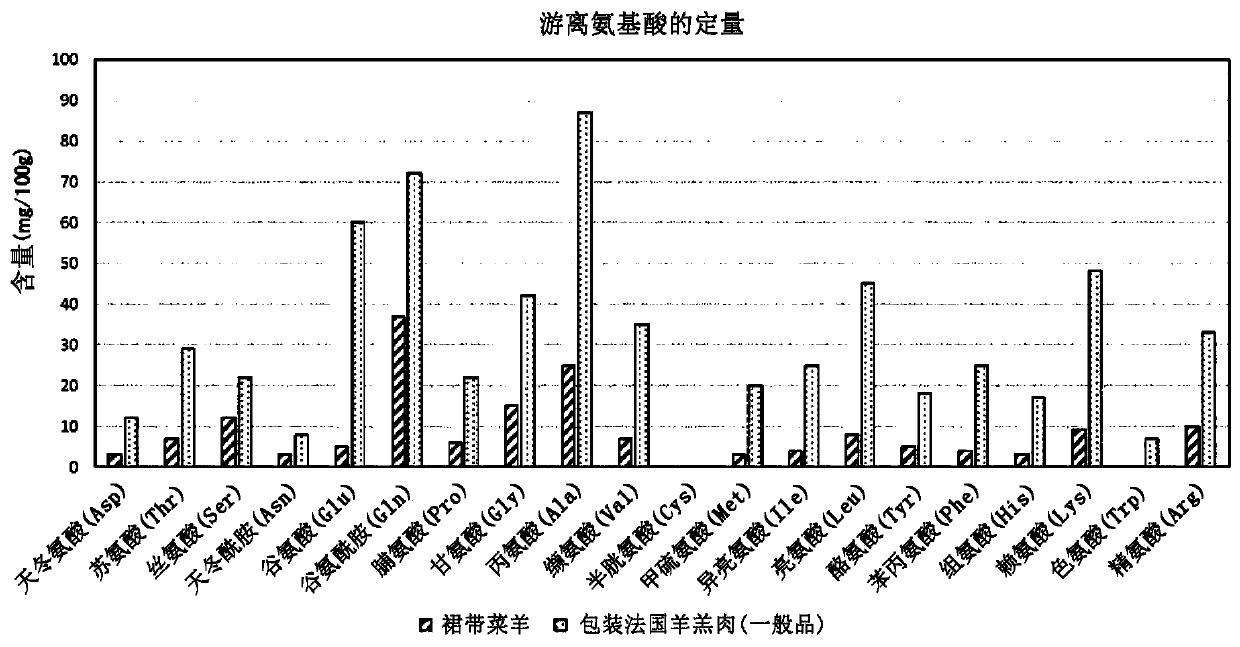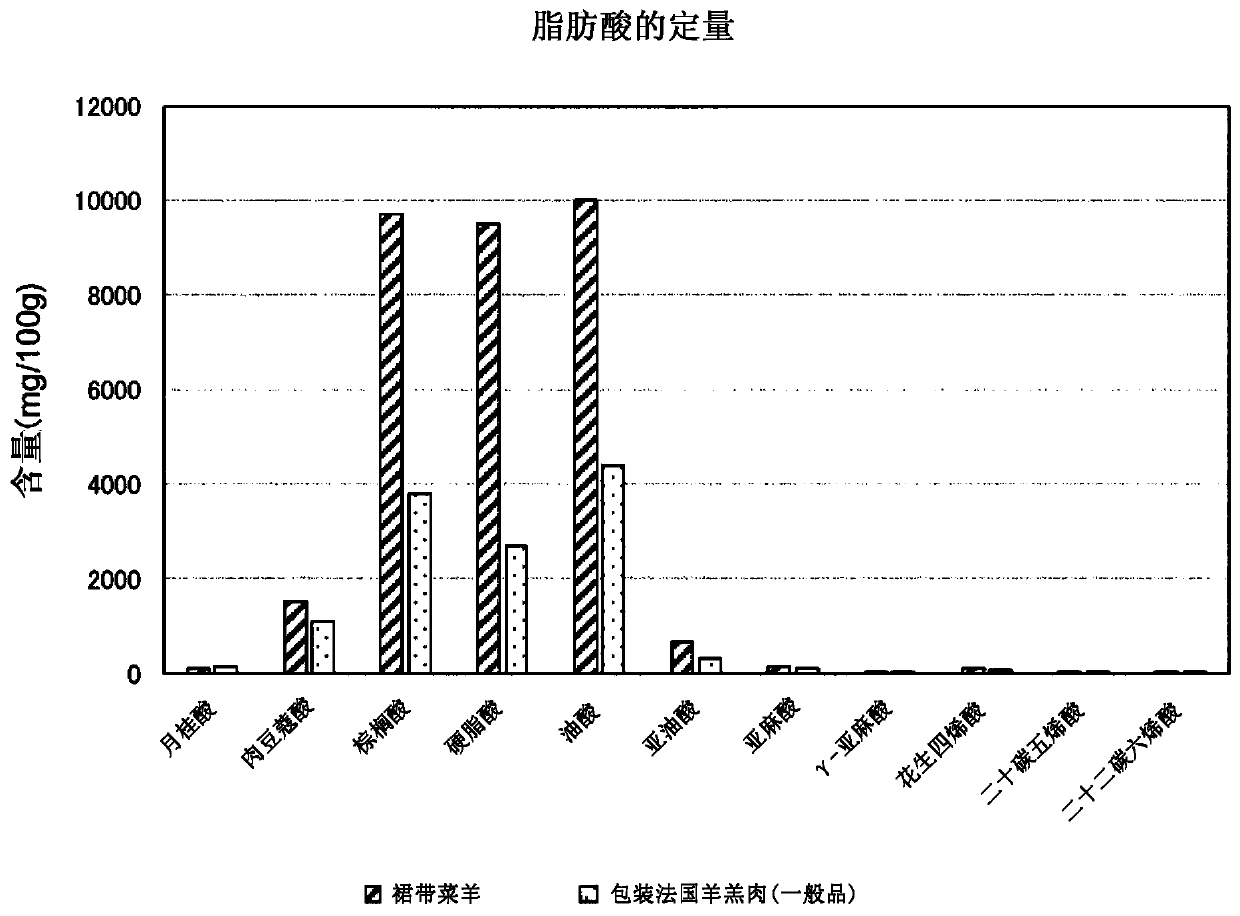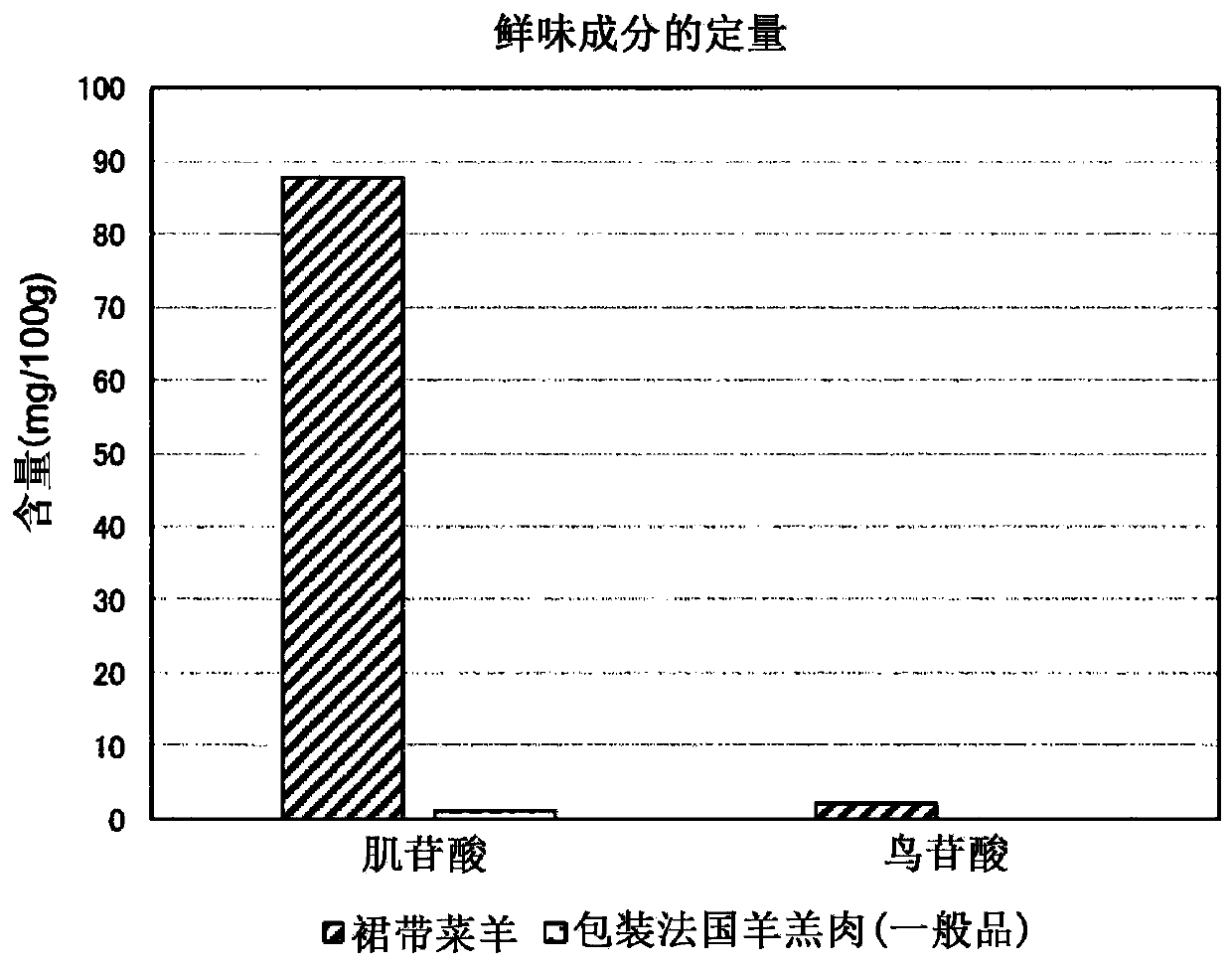Feed containing lactic acid fermentation mixture of marine alga and method for producing same
A technology of lactic acid fermentation and mixture, applied in animal feed, animal feed, food science, etc., can solve the problems of huge initial investment and achieve excellent palatability
- Summary
- Abstract
- Description
- Claims
- Application Information
AI Technical Summary
Problems solved by technology
Method used
Image
Examples
Embodiment 1 preparation example 1
[0065] As for the materials, wakame (produced in Miyagi Prefecture) chopped into about 1 cm, timoss (Phleum pratense L., premium grade, produced in the United States) chopped into about 2 cm, and commercially available compound feed for beef cattle ( Product name: ばく wheat without additives, manufactured by Shimizu Port Feed Co., Ltd.). The wakame to be tested was caught in the morning of the silage preparation day in the fishing port of Yosegi (Minamisanriku-cho, Motoyoshi-gun, Miyagi Prefecture). Buds are obtained from harvested wakame, and the remaining discarded stem parts are collected and used. Among the raw materials of the compound feed, the total of corn, barley and milo was 66% by mass, the total of wheat bran and corn gluten feed was 26% by mass, the total of soybean oil dregs was 7% by mass, and the total of calcium carbonate and salt was 1% by mass. The proportion of wakame in the whole varies from 0 to 60% by mass, and the remaining part is mixed with compound f...
Embodiment 2 preparation example 2
[0071] In this example, undaria pinnatae, rice stalks (variety: Tsuyahime, Miyagi Prefecture) and compound feed (trade name: ばく麦麻酱, manufactured by Shimizu Port Feed Co., Ltd.) from Miyagi Prefecture were used. Undaria pinnatifida was caught in the morning of the silage preparation day in the same manner as in Example 1 at Yosaki Fishing Port (Minamisanriku-cho, Motoyoshi-gun, Miyagi Prefecture) and chopped into about 1 cm, and the rice stalks were chopped into about 2 cm. The proportion of undaria pinnata was fixed at 50% by mass in the real object, and the ratio of rice straw and compound feed was changed to prepare 20% by mass of rice straw (20% by mass of rice straw, 30% by mass of compound feed, 50% by mass of Undaria pinnatifida), rice straw, and rice straw. 30% by mass of straw (30% by mass of rice straw, 20% by mass of compound feed, 50% by mass of Undaria pinnatifida), 40% by mass of rice straw (40% by mass of rice straw, 10% by mass of compound feed, 50% by mass of Un...
Embodiment 3
[0075] [Example 3] Palatability test of livestock
[0076] experiment method
[0077] In Example 1, two kinds of bait, silage and compound feed prepared by making the mixing ratio of wakame 55% by mass, were prepared, and one cow was fed separately in a self-feeding (cafeteria) manner in a separate area. At the same time, 500 g of bait was provided, and the amount of food consumed in a period of 3 minutes was compared. Regarding the start of the test, the time when the bait was provided and the bait was eaten was started. In addition, when 500 g was eaten up within 3 minutes, or when it was almost eaten up and transferred to another bait, the test was terminated. As cattle, 5 to 10-year-old Kuroge Wagyu breeding cattle (6 heads) were used. Generally, the bait is fed in the morning and evening, but the palatability test is carried out before the routine feeding. As the compound feed, bak wheat produced by Shimizu Port Feed Co., Ltd. was used.
[0078] test results
[0079...
PUM
 Login to View More
Login to View More Abstract
Description
Claims
Application Information
 Login to View More
Login to View More - R&D
- Intellectual Property
- Life Sciences
- Materials
- Tech Scout
- Unparalleled Data Quality
- Higher Quality Content
- 60% Fewer Hallucinations
Browse by: Latest US Patents, China's latest patents, Technical Efficacy Thesaurus, Application Domain, Technology Topic, Popular Technical Reports.
© 2025 PatSnap. All rights reserved.Legal|Privacy policy|Modern Slavery Act Transparency Statement|Sitemap|About US| Contact US: help@patsnap.com



